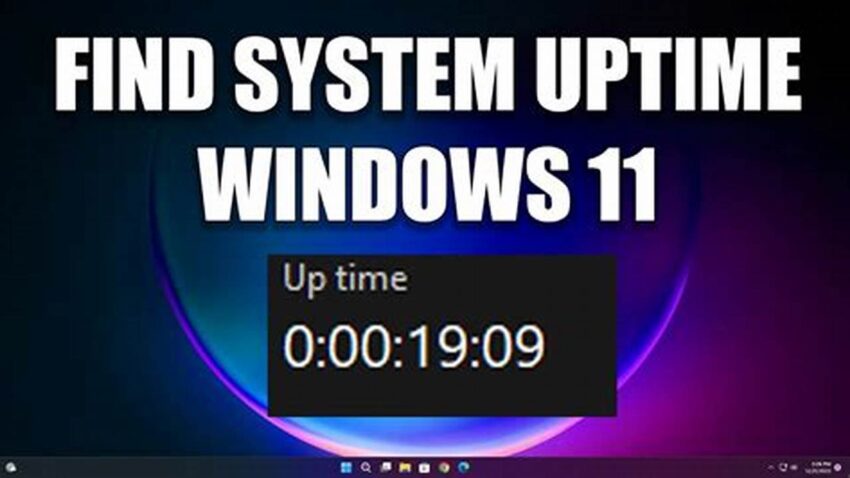Determining system uptime is a crucial diagnostic step for Windows administrators. It provides insights into system stability, potential hardware issues, and the effectiveness of maintenance routines. Understanding how long a system has been running without a restart can help pinpoint the source of recurring problems or assess the impact of recent changes.
1. System Stability Indicator
Extended uptime can indicate a stable system configuration, but unexpectedly short uptimes may signal underlying hardware or software problems requiring investigation.
2. Troubleshooting Aid
Uptime information is valuable when troubleshooting performance issues or unexpected system behavior. It can help correlate problems with recent restarts or software installations.
3. Performance Analysis
Tracking uptime allows administrators to monitor system performance over time. A decline in performance after extended uptime could indicate resource leaks or other accumulating issues.
4. Patch Management Evaluation
Uptime data helps assess the effectiveness of patch management strategies. Frequent restarts after patching might indicate issues with the patching process itself.
5. Security Auditing
Monitoring uptime is relevant for security audits. Unexpected reboots could be a sign of unauthorized access or malware activity.
6. Hardware Reliability Assessment
Consistent uptime contributes to assessing the reliability of hardware components. Frequent unexpected shutdowns might point to failing hardware.
7. Resource Monitoring
Long uptimes can be useful for identifying resource leaks or other issues that gradually degrade performance over extended periods.
8. Software Update Impact Analysis
Tracking uptime after software updates helps evaluate their impact on system stability and performance.
9. Planned Maintenance Scheduling
Knowing the system’s uptime helps determine optimal times for scheduled maintenance and reboots, minimizing disruption to users.
Tips for Checking Uptime
Task Manager: Access the Performance tab in Task Manager for a quick overview of system uptime.
System Information: The System Information utility (msinfo32) provides detailed system information, including uptime.
Command-Line Tools: Utilize command-line tools like `systeminfo` or PowerShell cmdlets like `Get-WmiObject Win32_OperatingSystem` for scripting and remote access.
Event Logs: Reviewing system event logs can help pinpoint the reasons for unexpected reboots and interruptions to uptime.
Frequently Asked Questions
Why is checking Windows uptime important?
It helps assess system stability, troubleshoot issues, and evaluate the effectiveness of maintenance and updates.
What are cmdlets?
Cmdlets are lightweight commands used in the Windows PowerShell environment for managing Windows systems.
How can I check uptime remotely?
PowerShell remoting or other remote administration tools allow checking uptime on remote Windows machines.
What are some common reasons for short uptimes?
Hardware failures, software conflicts, faulty drivers, or unexpected power outages can lead to shorter than expected uptimes.
Where can I find more detailed information about system events?
The Windows Event Viewer provides detailed logs of system events, including shutdowns and restarts.
How does uptime relate to system performance?
While extended uptime can indicate stability, it can also mask accumulating performance issues related to resource leaks or other long-term problems.
By effectively utilizing available tools and understanding the implications of uptime data, administrators can proactively maintain system stability, optimize performance, and enhance the overall reliability of their Windows environments.

